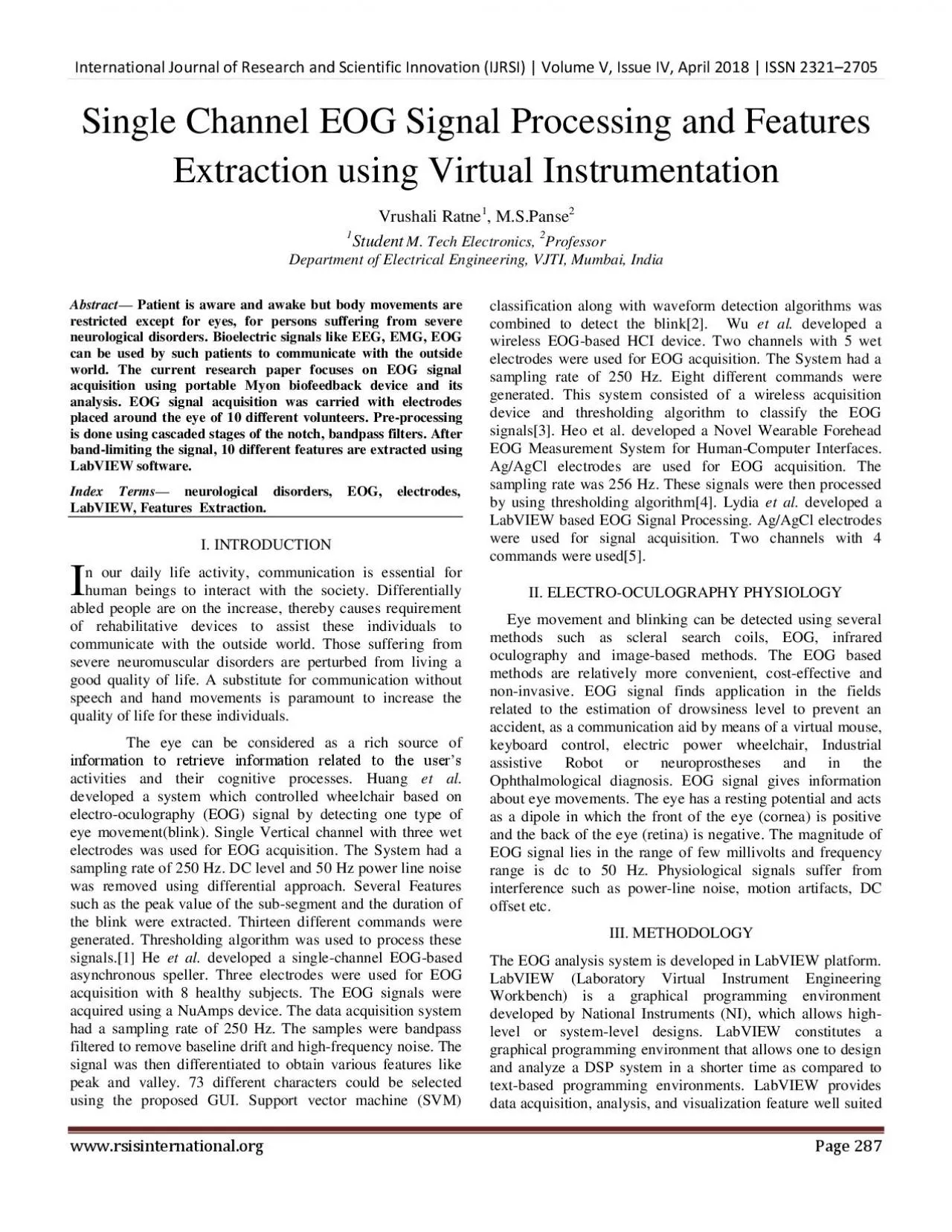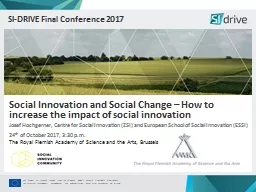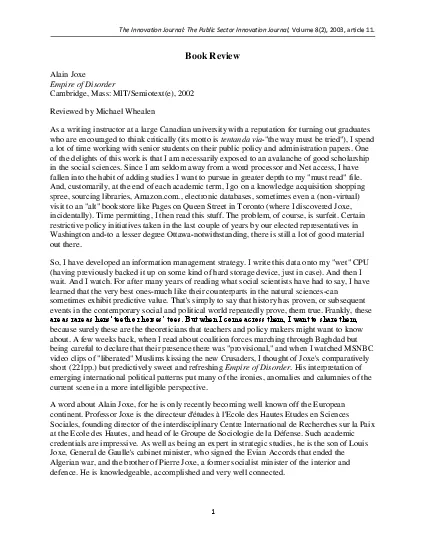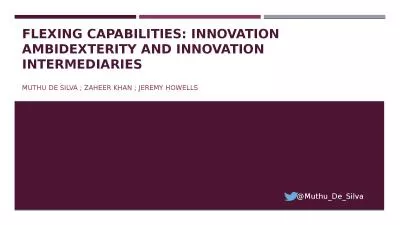PDF-International Journal of Research and Scientific Innovation IJRSI
Author : morgan | Published Date : 2022-09-08
2705 wwwrsisinternationalorg Page 287 Single Channel EOG Signal Processing and Features Extraction using Virtual Instrument ation Vrushali Ratne 1 MS Panse 2 1 Student M
Presentation Embed Code
Download Presentation
Download Presentation The PPT/PDF document "International Journal of Research and Sc..." is the property of its rightful owner. Permission is granted to download and print the materials on this website for personal, non-commercial use only, and to display it on your personal computer provided you do not modify the materials and that you retain all copyright notices contained in the materials. By downloading content from our website, you accept the terms of this agreement.
International Journal of Research and Scientific Innovation IJRSI: Transcript
Download Rules Of Document
"International Journal of Research and Scientific Innovation IJRSI"The content belongs to its owner. You may download and print it for personal use, without modification, and keep all copyright notices. By downloading, you agree to these terms.
Related Documents














